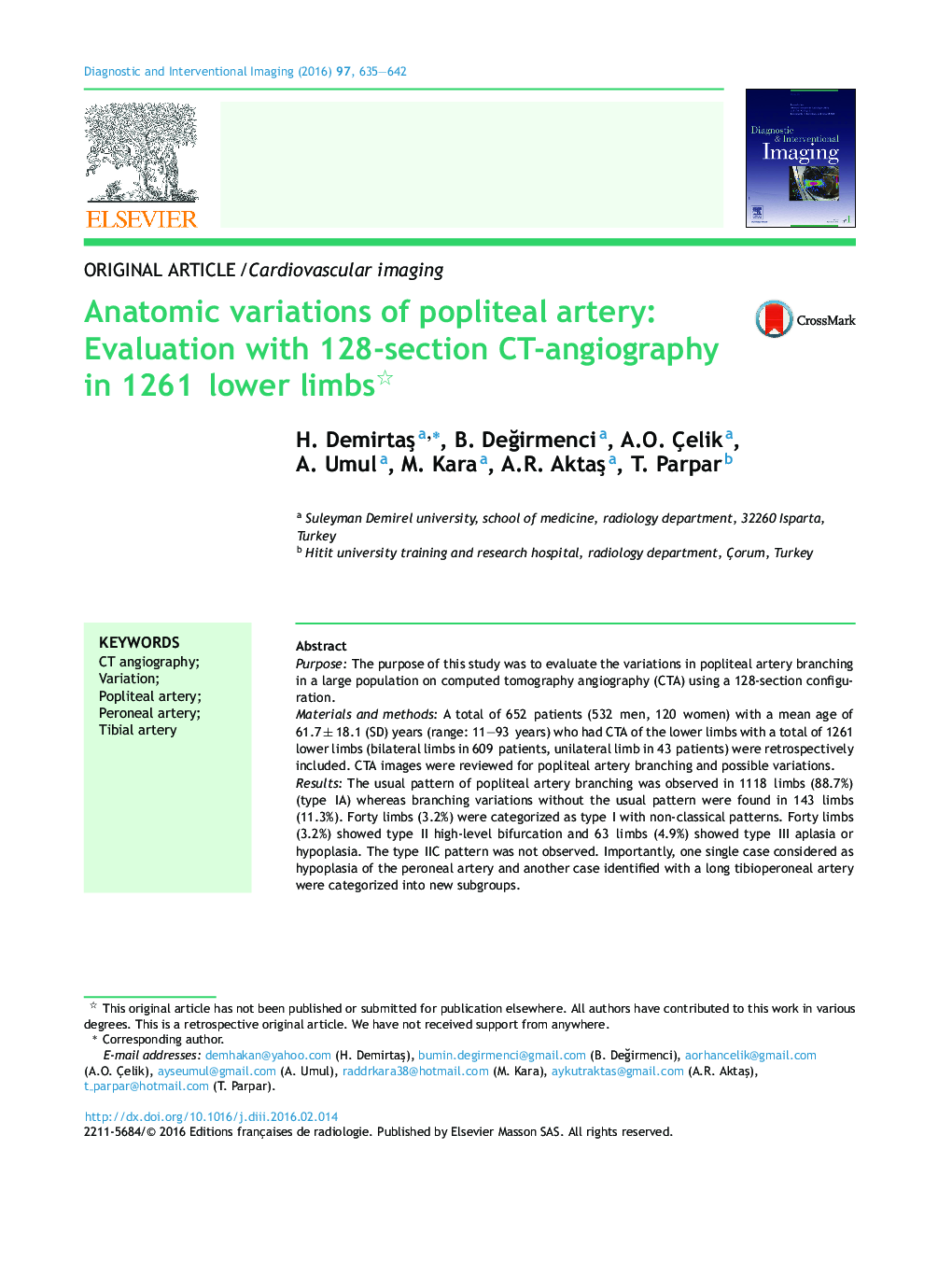| Article ID | Journal | Published Year | Pages | File Type |
|---|---|---|---|---|
| 2732639 | Diagnostic and Interventional Imaging | 2016 | 8 Pages |
PurposeThe purpose of this study was to evaluate the variations in popliteal artery branching in a large population on computed tomography angiography (CTA) using a 128-section configuration.Materials and methodsA total of 652 patients (532 men, 120 women) with a mean age of 61.7 ± 18.1 (SD) years (range: 11–93 years) who had CTA of the lower limbs with a total of 1261 lower limbs (bilateral limbs in 609 patients, unilateral limb in 43 patients) were retrospectively included. CTA images were reviewed for popliteal artery branching and possible variations.ResultsThe usual pattern of popliteal artery branching was observed in 1118 limbs (88.7%) (type IA) whereas branching variations without the usual pattern were found in 143 limbs (11.3%). Forty limbs (3.2%) were categorized as type I with non-classical patterns. Forty limbs (3.2%) showed type II high-level bifurcation and 63 limbs (4.9%) showed type III aplasia or hypoplasia. The type IIC pattern was not observed. Importantly, one single case considered as hypoplasia of the peroneal artery and another case identified with a long tibioperoneal artery were categorized into new subgroups.ConclusionsRecognizing and evaluating variations in popliteal artery branches is important in terms of vascular surgery approaches and interventional vascular procedures. CTA is an effective screening method to show the vascular frame of lower extremities and variations of popliteal artery. Our study allowed identifying two new branching patterns of the popliteal artery not previously described in the literature.
